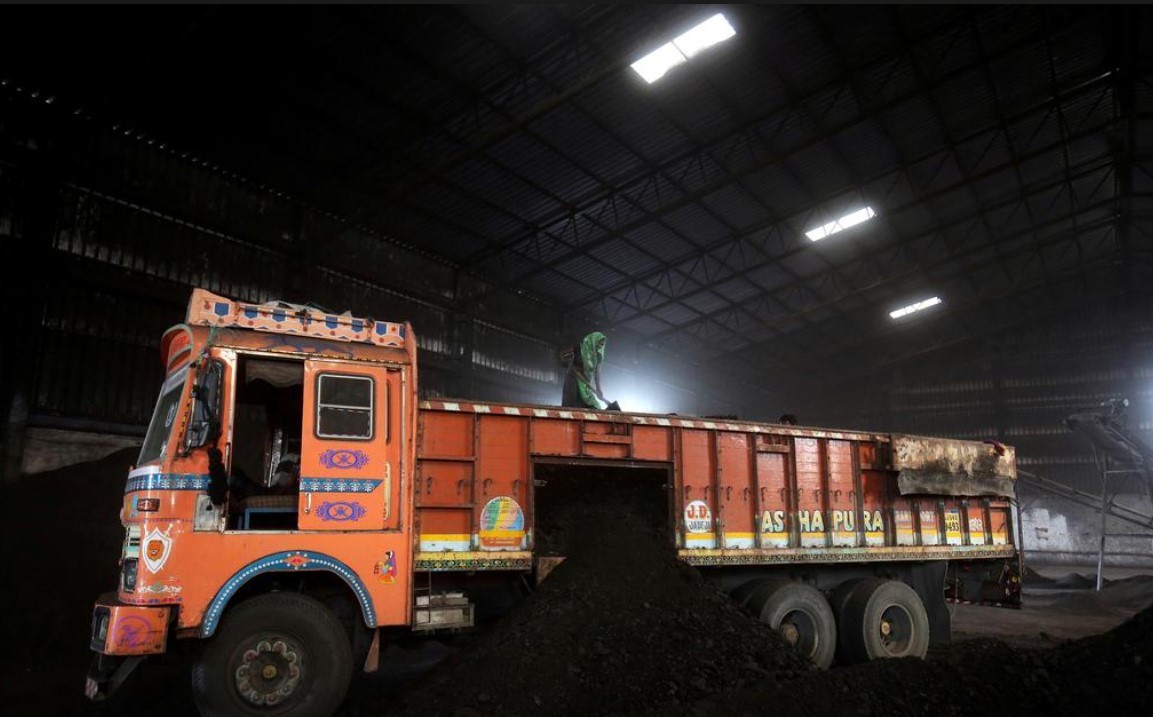India’s ambitious renewable energy goals may have received a lot of international attention, but coal still seems to be irreplaceable as the prime energy source for power generation, as various recent studies reveal.
The hold of the dirtiest fuel over the country’s electricity generation tightened further this year, rising to its highest level in at least nine quarters during the first three months of 2021, government data showed, reversing a trend of renewable energy gaining at coal’s expense.
Another analysis of daily load despatch data from the federal grid regulator POSOCO, by Reuters, showed the share of coal and lignite rose to 78.9% during the quarter ending March 31, compared with 75.9% in the same period last year.
Read more: China won’t be putting its Greenland ambitions on ice just yet
Although, for a brief while, the share of renewable energy rose in 2020 when overall power demand was reduced by pandemic lockdowns. This year seasonal factors have limited output of renewables, including hydroelectricity, which are weather dependent, helping coal’s share to rebound.
Coal’s contribution to India’s annual electricity generation fell for the second straight year to a five-year low of 1,064 terawatt-hours (TWh) in 2020 due to Covid, marking a departure from decades of growth in coal-fired power.
A consistent rise in the share of renewables culminated in coal’s share in electricity generation falling below 60% for the first time in decades on Aug 12 last year. However, that was only a dip.
Just over five months later, coal’s contribution to daily power output rose to more than 80% for the first time in at least 750 days on January 20, a feat that was repeated nine more times to March 31, according to the study by Reuters.
RENEWABLE CAPACITY
Worse, with India’s electricity demand set to increase more rapidly than its overall energy demand, coal-fired power generation is projected to surge again as expanding renewable energy capacity cannot keep up with electrification growth in the world’s second biggest population. That is not unexpected, though.
India’s power generation is set to grow exponentially to 3,565 TWh by 2037, more than double the level in 2020. Electricity production will already exceed 2,000 TWh from 2025 and is set to break the 3,000 TWh ceiling from 2034, as a result of an electrification boost and rapid economic expansion, according to Rystad.
Rystad Energy expects India’s electricity generation to increase with an average yearly growth rate of 4.2%, effectively tripling its current level over the next 30 years.
In other words, coal’s share in India’s primary energy consumption is set to expand by about 43% in 2037, when coal power could finally peak. Still, despite its dominant position in the Indian energy market, the Indian coal industry faces structural and financial challenges.
SYSTEM DISTORTIONS
Aside from the fact that the Indian power system is riddled with inefficiencies and distortions from coal mining through final power sales to consumers, the state-owned miner Coal India Limited (CIL), which supplies 85% of India’s mined coal, is struggling to meet growing demand.
The Indian government encourages private coal mining, but bureaucracy and red tape – like land and permits to expand production – are the greatest challenges.
Inefficiencies in power generation and financial stress, particularly in the government sector, continue to plague power generation too.
State-level power distribution companies buy power from generators, predominantly through power purchase agreements, for sale to consumers at regulated prices.
However, they lose money on every kilowatt-hour sold. Additionally, commercial and industrial customers pay higher rates to subsidise residential consumers.
CLEANER ELECTRICITY
But there’s hope in cleaner electricity. Rystad Energy forecasts today’s power mix will be unrecognisable in three decades as the government pushes for greener initiatives like renewable sources – wind, solar, hydro and biofuels/waste – that will surpass fossil fuels in India’s total power generation by 2038.
Further out, Rystad expects solar to outcompete coal by 2050 in terms of the largest share in the power mix.
“India has made some progress in meeting sustainable development goals and its government has set ambitious targets. However, even though it has huge potential for clean power generation, our view is that in the short term its renewable targets are too ambitious. It may take a bit longer, but eventually we will see renewable power dominate,” said Fabian Rønningen, gas and power analyst at Rystad Energy.
SOLAR AND WIND
New solar and wind projects are projected to accelerate the expansion of India’s renewable power generation. Rystad Energy expects electricity produced by solar PV to grow to 65 TWh in 2021 from 55 TWh in 2020, and then rise further to 128 TWh through 2025 and 233 TWh in 2030.
Power generated by onshore wind turbines, from 69 TWh in 2020, is set to rise to 82 TWh in 2021 and 143 TWh in 2025. In 2030, electricity produced from onshore wind is expected at 254 TWh.
Solar power production will continue to grow even more after 2030, but as onshore wind is also set for a massive boost, solar will only overtake onshore wind towards the end of 2050, estimates from Rystad Energy show.
• Indrajit Basu
This report was updated for style purposes on December 28, 2021.
ALSO ON AF:
Coal and Biomass Habit Threatens India’s ‘Solar-Power Revolution’
India Opens Up Coal Mining to Private Sector
























